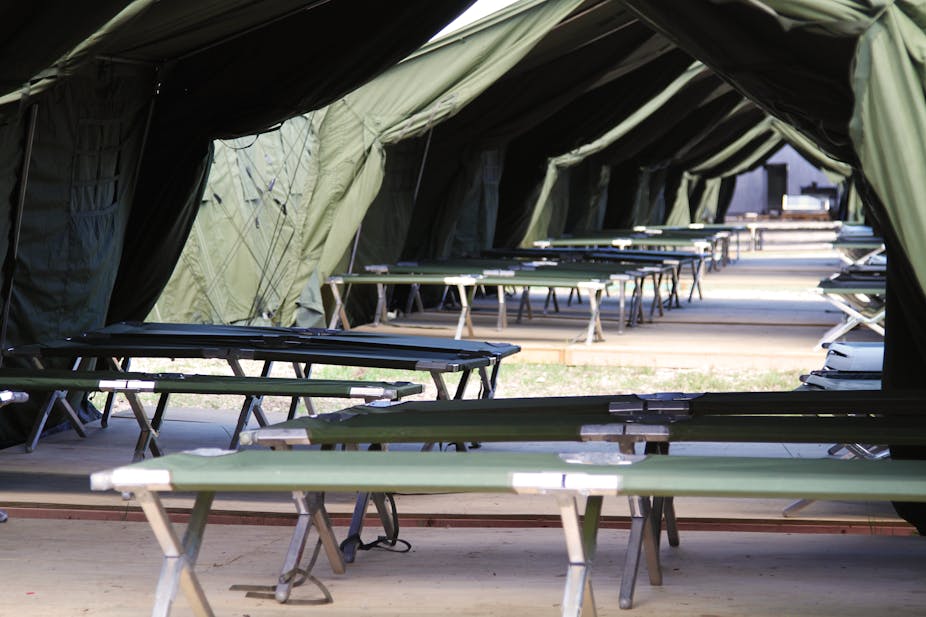Greater transparency and improved access for the media to interview asylum seekers in detention is required say human rights lawyers, after three separate incidents of self-harm at the Nauru processing centre.
One man attempted self-harm on Thursday and another two did the same on Saturday according to an Immigration Department spokesman, who told the media no further details could be supplied due to privacy reasons.
The report came as more than 500 new asylum seekers arrived by boat over the weekend and were transferred to Christmas Island.
A ban on interviews with asylum seekers in detention makes it very difficult for journalists to tell the stories of individual asylum seekers, with media representatives that visit detention centres forced to submit all footage, photographs and recordings for review.
Earlier this year the Australian Press Council wrote to the Department of Immigration and Citizenship (DIAC), requesting an exception to the complete prohibition on interviews if the detainee has given informed consent.
A spokesman for the Press Council said the Department had acknowledged the request, and wrote in a letter that it was considering the points raised by the Press Council.
“You do on the one hand have to protect vulnerable people, but on the other hand you have to be suspicious of the government using that to stifle discussion,” said Susan Kneebone, law professor at Monash University.
“There needs to be a balance between the views of the Press Council and the government,” Professor Kneebone said.
“You can see that these people are vulnerable, but they are also very willing to speak. Their vulnerability makes them more willing to speak, that in turn can make them more vulnerable.”
Professor Kneebone said the use of pseudonyms and ensuring identifying details were not released was critical, but added that it was important asylum seekers were given a voice.
“Media access to immigration detention facilities is an important way of ensuring that the human rights of asylum seekers are being protected,” said Alexandra Phelan, human rights lawyer at Australian National University.
“This requires transparency of the experiences of asylum seekers in immigration detention and the conditions in which they are living in.”
The Australian Human Rights Commission periodically visits and reports on conditions in detention centres. In September it raised concerns that the human rights of asylum seekers sent to Nauru would not be adequately protected.
“In order to ensure that the rights of asylum seekers under various international conventions and treaties (such as the ICCPR and Convention Against Torture) are being upheld, transparency of the immigration detention experience is essential,” Ms Phelan said.
She added that while the Department of Immigration’s concerns regarding the privacy of asylum seekers in detention were reasonable, the Press Council’s suggested exception for those giving informed consent went part of the way to addressing concerns about repercussions in cases where interviewees were not granted asylum.
“As well as ensuring that asylum seekers’ rights are being protected, these are matters of significant public interest,” Ms Phelan said.
Australia should “hang its head in shame” on the issue of access to asylum seekers in detention said Johan Lidberg, senior journalism lecturer at Monash University.
“Internationally I can’t think of any other country that has the extent of restriction on journalist access to asylum seekers,” Dr Lidberg said.
He added that it was not in the public interest for the media to be unable to tell the very important stories of asylum seekers in detention.

